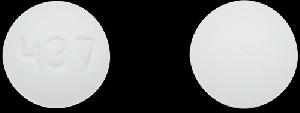Olmesartan Dosage
Medically reviewed by Drugs.com. Last updated on Apr 18, 2025.
Applies to the following strengths: 5 mg; 20 mg; 40 mg
Usual Adult Dose for:
Usual Pediatric Dose for:
Additional dosage information:
Usual Adult Dose for Hypertension
20 mg orally once a day; may increase dose to 40 mg in two weeks if further blood pressure reduction is needed.
Maximum dose: 40 mg orally once a day
Comments:
- For patients with possible intravascular volume depletion (e.g., patients treated with diuretics, especially those with impaired renal function), initiate this drug under close supervision and give consideration to a lower starting dose.
- Twice daily dosing offers no additional benefit over the same total dose give once daily.
Usual Pediatric Dose for Hypertension
6 to 16 years:
- 20 to less than 35 kg: 10 mg orally once a day; may increase dose to 20 mg in two weeks if further blood pressure reduction is needed
- 35 kg or more: 20 mg orally once a day; may increase dose to 40 mg in two weeks if further blood pressure reduction is needed
Comments:
- For children who cannot swallow tablets, the same dose can be given using an extemporaneous suspension.
Renal Dose Adjustments
No adjustment recommended
Liver Dose Adjustments
No adjustment recommended
Precautions
US BOXED WARNING:
- FETAL TOXICITY: If pregnancy is detected, discontinue this drug as soon as possible. Drugs that act directly on the renin angiotensin system (RAS) can cause injury and death to the developing fetus.
Safety and efficacy have not been established in patients younger than 1 year; this drug has not been shown to be effective for hypertension in patients younger than 6 years.
Consult WARNINGS section for additional precautions.
Dialysis
Data not available
Other Comments
Storage requirements:
- Extemporaneous suspension: Refrigerate at 2 to 8C; may store up to 4 weeks.
Reconstitution/preparation techniques (200 mL of a 2 mg/mL suspension):
- Add 50 mL purified water to an amber polyethylene terephthalate (PET) bottle containing twenty, 20 mg tablets of this drug and allow to stand for at least 5 minutes.
- Shake the container for at least 1 minute and allow to stand for at least another minute. Repeat 4 additional times.
- Add 100 mL Ora-Sweet(R) and 50 mL Ora-Plus(R) and shake well for at least 1 minute.
- Shake well before each use and return to refrigeration promptly.
Monitoring:
- Monitor serum electrolytes periodically.
- Monitor serum creatinine periodically in patients with impaired renal function.
Patient advice:
- Females of childbearing age should be informed of the consequences of exposure to this drug during pregnancy; ask these patients to report pregnancies as soon as possible.
More about olmesartan
- Check interactions
- Compare alternatives
- Pricing & coupons
- Reviews (201)
- Drug images
- Side effects
- During pregnancy
- Drug class: angiotensin receptor blockers
- Breastfeeding
- En español
Patient resources
Other brands
Professional resources
Other brands
Related treatment guides
See also:
Further information
Always consult your healthcare provider to ensure the information displayed on this page applies to your personal circumstances.


